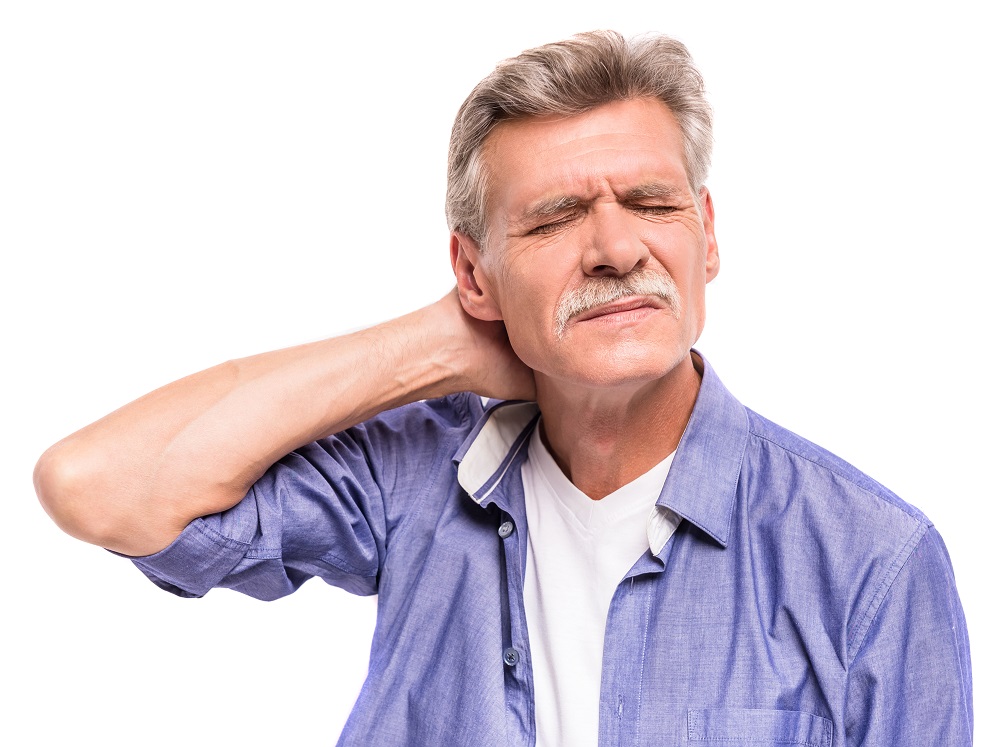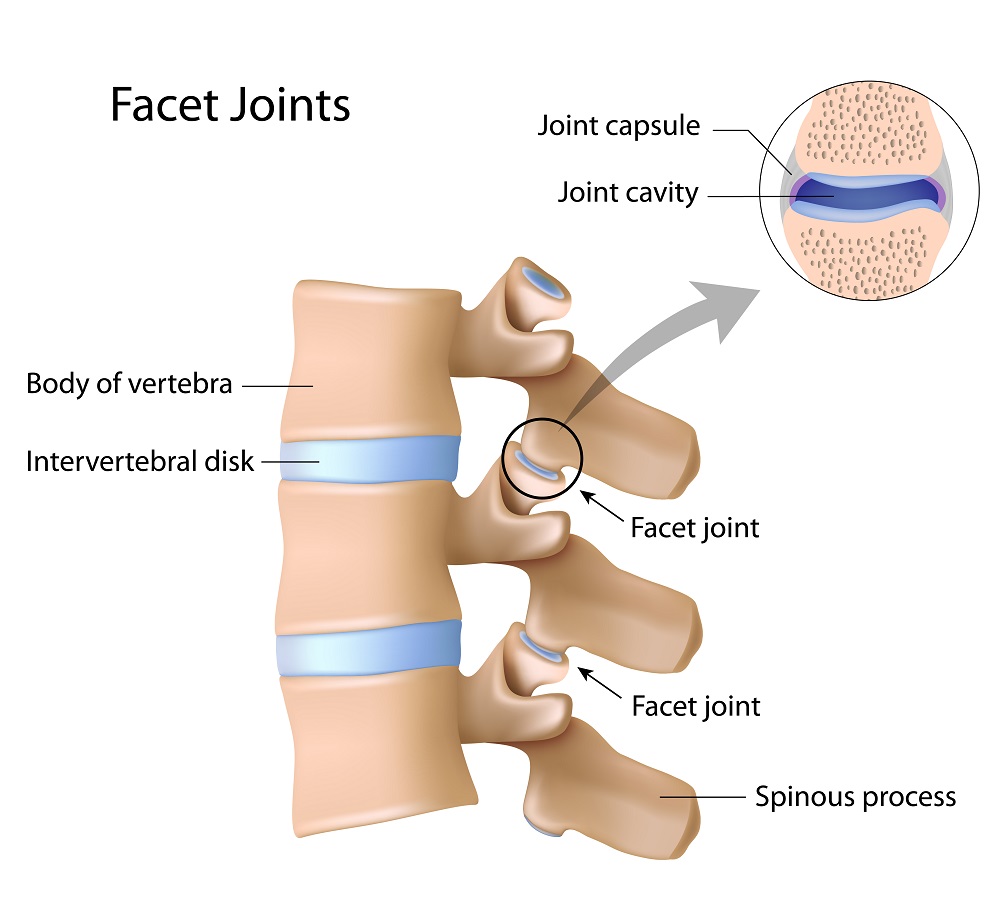In general, osteoarthritis develops as time goes by. In the beginning, a person may only have joint pain after physical work or exercise which eventually disappears. But the pain might return when the affected joint is used or overused.
As the cartilage between the bones gradually thins, the patient suffers more and more from permanent pain. Finally the affected person has difficulties to walk or climb stairs. Joint pain and stiffness may also occur after long periods of inactivity. With advanced osteoarthritis, the pain often remains, even with very little movement or at rest.
However, the pain caused by facet joint osteoarthritis does not follow a nerve root pattern. Patients often complain of pain in a generalized, poorly defined region of the neck or back. Pain worsens normally by sudden movements or prolonged episodes of poor posture, (e.g. kneeling, sitting in front of the computer for a long time).
More symptoms might be:
- Stiffness and pain in the joints (especially in the morning and evening)
- Steady or periodic joint pain
- Sometimes, increase of pain with movement
- Isolated pain in the affected area of the spine
- Sometimes, pain radiates into arms or legs
- Pain disrupts sleep (when the arthritic joints grind together)
- Spondylolisthesis
- Swelling and warmth in one or more joints, often with changing weather
- Tenderness when the affected area of the spine is pressed
- Loss of flexibility of a joint (e.g. patient is not able anymore to pick up something off the floor)
- Crunching feeling when the joint is moved (especially in the neck)
- Abnormal curve in the spine
- Pinching, tingling, or numbness in a nerve or the spinal cord (e.g. when bone spurs form at the edge of the joints of the spine and irritate the nerves
The most common cause of the disease is the wear and tear of the intervertebral discs. This leads to a loss of height of the intervertebral disc with a consecutive burden of vertebral joints, causing an increased cartilage wear. Although osteoarthritis in general affects people older than 50, it can also be found in young patients. Caused by joint overload (due to heavy lifting, sports, overweight or slipped disc, etc.) or postural deformities, the wear and tear of the small vertebral joints may also lead to painful conditions among the young people.
With progressive osteoarthritis, many joints of the body may be involved. Unlike arthritis, osteoarthritis does not affect organs or soft tissue areas of the body. Severe neurological deficits might occur in some patients.
Facet joint arthritis can be diagnosed by physical examination, X-ray, or MRI. A diagnostic block into the facet joint or nerves that supply the joints may confirm that the facet joints is the source of pain.
The therapy of the disease depends on the symptoms, especially on the degree of pain. Since joint degeneration is irreversible, pain treatment and restoration of the functional capacity of the spine are central aspects in the treatment. The doctors normally try to treat facet joint osteoarthritis conservatively (without surgery).
They try to use the mildest adequate treatment procedures. Physiotherapy, massage, water therapy and chiropractic manipulation can be effective measures to treat the symptoms of the disease. The doctor may also prescribe pain killers to ease the pain. Another option is a heating injection procedure (“radiofrequency ablation”) with the target to block the nerves that send pain from the facet joints.
Surgery only might be necessary in case of severe neurological deficits and numbness.
Preventive measures
Recreational sport, such as nordic walking, swimming, or spine gymnastics may prevent facet joint osteoarthritis. But regular physical activity can also help people who already suffer from the disease: It is important to strengthen the musculature around the spine to stop or prevent a progression of the osteoarthritis.



